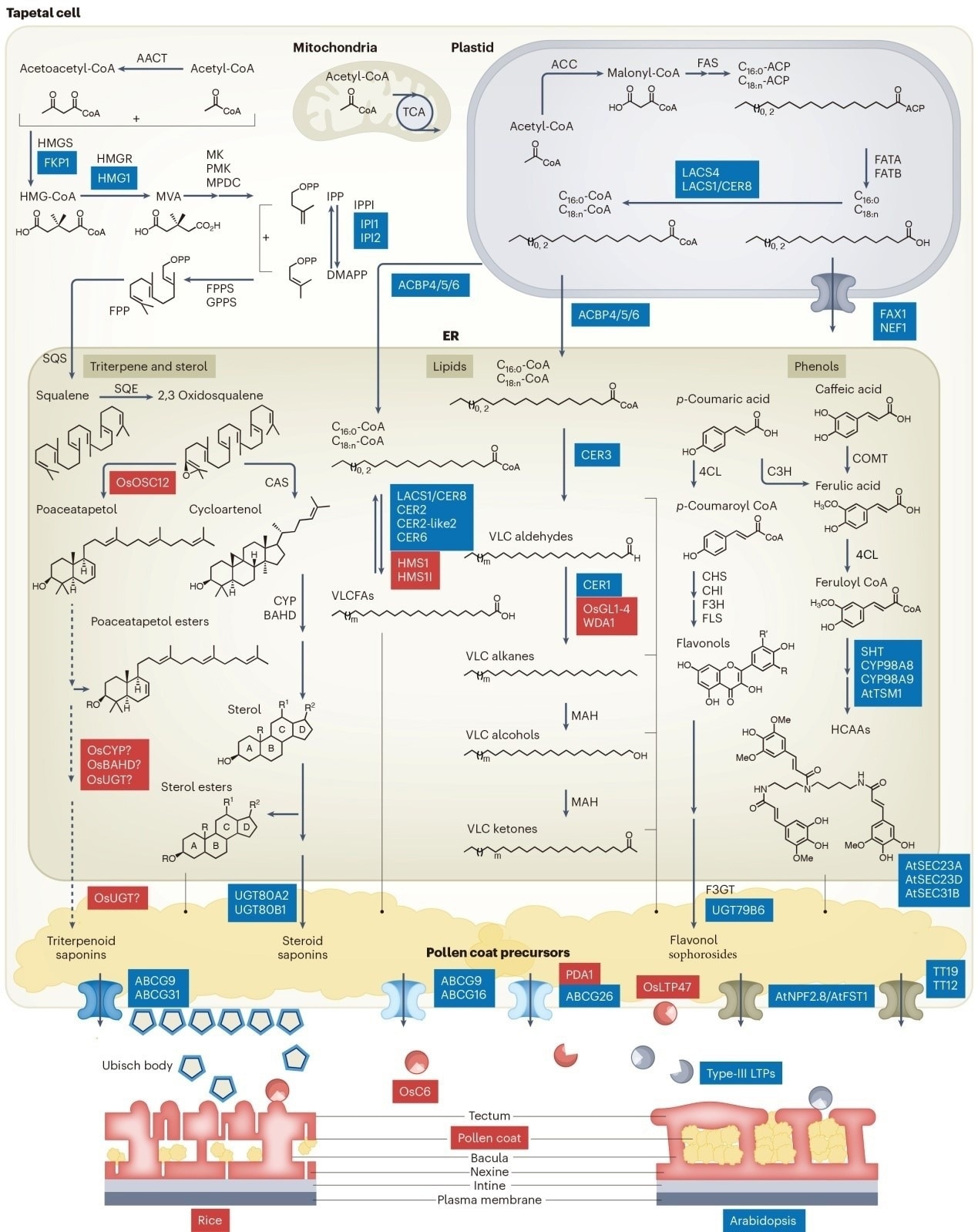Pollen coat biosynthesis and transport are intricate processes involving compartmentalized biosynthesis, coordinated transport, and exact regulation between organelles and cell types, according to research conducted under the direction of Prof. Xiaoquan Qi at the Institute of Botany of the Chinese Academy of Sciences.
 A diagram of the biosynthesis and transport of pollen coat formation in monocotyledons and dicotyledons. Image Credit: QI Xiaoquan
A diagram of the biosynthesis and transport of pollen coat formation in monocotyledons and dicotyledons. Image Credit: QI Xiaoquan
On May 25th, 2023, the review was published in Nature Plants.
The creation of pollen coats in Poaceae is regulated by a tapetum-specific triterpene metabolic pathway, and a lost-of-function mutation in OsOSC12, a crucial enzyme for triterpene biosynthesis, causes humidity-sensitive genic male sterility (HGMS), according to a previous study.
In addition to answering the fundamental scientific question of how important reproductive organs develop, research into the pollen coat’s formation mechanism can shed light on the genetic and molecular underpinnings of HGMS, yielding valuable male-sterile lines, and providing a theoretical framework for the use of crop heterosis.
In this review, the researchers thoroughly compared the morphology, composition, and function of pollen coats among plant species with various pollination types. They discovered that, with a distinct lineage specificity, the morphology and composition of pollen coats are related to the pollination modes of various plant species.
Important pollen coat components include long and extremely long chain fatty acids and their derivatives, as well as tiny compounds and proteins.
They outlined the genes and coding proteins involved in the production of pollen coat precursors. They found that they are primarily responsible for lipid, phenol, triterpene, and sterol metabolism in the middle and late phases of anthocyanin formation.
Among these, there were significant differences in triterpene and sterol metabolism between several species, suggesting possible lineage specialization.
They looked specifically at the morphological alterations of two oil-enriched organelles in the late stage of another development stage as they contrasted the processes of tapetum breakdown with pollen wall production between monocotyledons and dicotyledons at the cellular level.
They also explored several important scientific issues. What precisely makes up the pollen coat, for instance? How are the precursors for pollen coats created and transported? How, therefore, are pollen coat precursors’ production and movement coordinated during a different development?
With the use of more advanced techniques, such as in-depth plant genome mining, single cell and spatial multi-omics, and the monitoring of pollen coat proteins and metabolites, these concerns will be answered.
Finally, it was explored how to use pollen coat-defective mutants with HGMS in crop heterosis. In arid regions (like Xinjiang, China), HGMS lines can be utilized as a male-sterile female parent to create a hybrid seed; in humid and moist areas (like southern China), HGMS lines can be self-pollinated.
This will greatly increase the utilization of plant heterosis for crop production and broaden the geographic scope of two-line hybrid seed production.
Source:
Journal reference:
Qiao, Y., et al. (2023). Biosynthesis and transport of pollen coat precursors in angiosperms. Nature Plants. doi.org/10.1038/s41477-023-01413-0